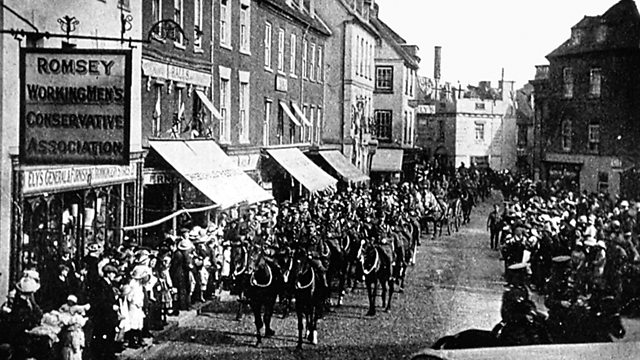Romsey, Hampshire: Preparing Horses For Battle
The story of Romsey’s war horses and warrior, “the horse the Germans could not kill”
The British Army sent around a million horses to the Western Front. Fewer than one in ten returned.
Romsey Remount Depot prepared more than 120,000 horses for war, sending them to Southampton where they embarked for France.
The Remount Depot was opened in 1914, at Pauncefoot Hill. The horses, many of them semi-wild from North and South America, arrived by train at Romsey station and were led through the town to a vast military village, spanning more than 500 acres and with a complement of more than 2,000 men. Most of the horses were later sent on to Swaythling Depot to be shipped to France.
One ‘war horse’ is remembered above all others: Warrior, the mount of Major General Jack Seely of Mottistone. Born and raised on the Isle of Wight, Warrior went to war in 1914 and survived the horrors of Ypres, Passchendaele and the Somme. His newspaper obituary in 1941 was entitled, ‘The horse the Germans could not kill.’
In 2014 commemorative horse statues are planned both on the Isle of Wight and at Romsey’s War Memorial Park. The Park was built using hardcore from the dismantled Depot and was officially opened by Major General Seely in 1921.
Location: Romsey SO51 6AA
Image shows a parade through Romsey marketplace in 1916, courtesy of Phoebe Merrick
Presented by Marcus White
Duration:
This clip is from
Featured in...
![]()
The Real War Horses—World War One At Home
The horses that went to war
![]()
����ý Radio Solent—World War One At Home
Places around the Solent that tell a story of World War One
More clips from World War One At Home
-
![]()
The loss of HMY Iolaire
Duration: 18:52
-
![]()
Scotland, Slamannan and the Argylls
Duration: 07:55
-
![]()
Scotland Museum of Edinburgh mourning dress
Duration: 06:17
-
![]()
Scotland Montrose 'GI Brides'
Duration: 06:41







